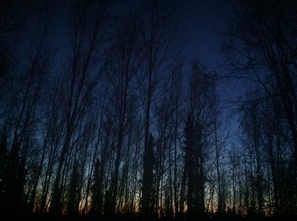The Narrow Aisle to the Deep North in Los Angeles and San Diego

The Narrow Aisle to the Deep North is designed so that it can be played at different stations that the player moves to between movements, and this is noted throughout the score, though it is not a limiting factor if this is not an option. The title is derived in part from a travelogue by 17th century Zen hermit poet Basho, entitled The Narrow Road to the Deep North. Basho’s work is written in a style that combines haiku with standard prose, and explores the landscape, natural events, and people he meets along the way interacting with both. This solo percussion piece takes a similar path, but in the context of sound. Whereas haiku capture a moment and potentially juxtaposed ideas occurring in our everyday lives in Basho’s work, here there are a series of field recordings that capture the sounds of a trip I took from Seattle Washington to Fairbanks Alaska to hear some of my percussion music played and also work on this piece with percussionist Bonnie Whiting Smith. And, in place of prose, we have a series of stations of instruments creating a narrative sonic landscape that the performer interacts with and illuminates for the audience. The source of the music as alluded to before is drawn from a few days in Alaska discussing and exploring sounds and instruments, observing the changing of light at a northern latitude, stargazing, and watching the aurora borealis; as well as from everyday life for me here in Seattle. Being a sort of record of a period of time, a similar travelogue title seemed appropriate, and since paved roads, and cramped airline aisles are par for the course for anyone working in music, changing road to aisle seemed like a simple and final way to customize this travelogue format for our modern sonic context, as well as describe, if only casually, where this landscape of sound was drawn from.
 RSS Feed
RSS Feed